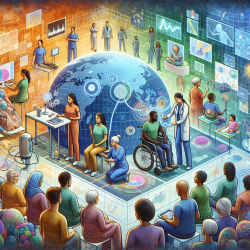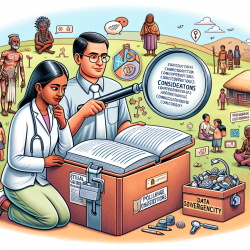Introduction
The prevalence of young-onset dementia (YOD), defined as dementia manifesting before the age of 65, presents unique challenges that differ from those associated with late-onset dementia. The research article "Rehabilitation Services for Young-Onset Dementia: Examples from High- and Low–Middle-Income Countries" provides a comprehensive overview of the current landscape and potential advancements in rehabilitation services for YOD. This blog aims to highlight key findings and encourage practitioners to integrate these insights into their practice, thereby improving outcomes for individuals with YOD.
Understanding Young-Onset Dementia
YOD encompasses various forms of dementia, including early-onset Alzheimer's disease (EOAD), behavioral variant frontotemporal dementia (bvFTD), primary progressive aphasia (PPA), and posterior cortical atrophy (PCA). Each subtype presents distinct cognitive and functional challenges, necessitating tailored rehabilitation approaches.
Evidence-Based Therapies
The article synthesizes evidence-based rehabilitative therapies for each YOD phenotype:
- Amnestic Early-Onset Alzheimer's Disease: Cognitive rehabilitation focusing on episodic memory and daily functional activities, using techniques like modeling and action-based learning.
- Behavioral Variant Frontotemporal Dementia: Interventions such as the Tailored Activity Program (TAP) and Positive Behavior Support (PBS) to manage functional and behavioral symptoms.
- Primary Progressive Aphasia: Language-focused therapies, including word retrieval and script training, supported by communication partner training (CPT).
- Posterior Cortical Atrophy: Adaptation of brain injury rehabilitation techniques, using visual and tactile cues to enhance object location and navigation.
Models and Delivery of Rehabilitation Services
The research highlights diverse models of rehabilitation service delivery across different countries, emphasizing the importance of integrating services within existing healthcare frameworks. Examples include third-sector organizations in the UK, public-private collaborations in Brazil, and specialized memory units in Chile and India. These models demonstrate the feasibility of providing comprehensive care despite resource constraints.
Leveraging Telehealth
Telehealth emerges as a pivotal tool in extending rehabilitation services to individuals with YOD, particularly in regions with limited access to specialized care. By overcoming geographical barriers and reducing costs, telehealth facilitates the delivery of therapies such as cognitive rehabilitation and speech-language therapy.
Real-world vignettes illustrate the practical application of telehealth in providing personalized care for YOD patients, highlighting its potential to enhance accessibility and sustainability of rehabilitation services.
Conclusion
The insights from this research underscore the critical need for tailored rehabilitation services for YOD, leveraging both traditional and innovative delivery methods. Practitioners are encouraged to explore these evidence-based approaches and consider integrating telehealth solutions to enhance service accessibility. By doing so, we can significantly improve the quality of life for individuals living with YOD.
To read the original research paper, please follow this link: Rehabilitation Services for Young-Onset Dementia: Examples from High- and Low–Middle-Income Countries.










